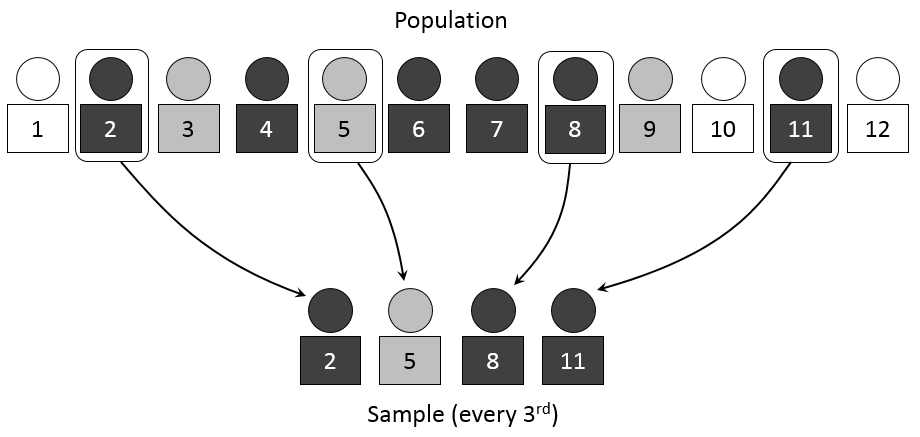LESSON: Sampling Methods
Probability Sample Methods
Systematic Random Sample
There are other types of samples that are not simple random samples, and one of these is a Systematic Random Sample. In systematic sampling, after choosing a starting point at random, subjects are selected using a jump number. If you have ever chosen teams or groups in gym class by counting off by threes or fours, you were engaged in systematic sampling.
The jump number is determined by dividing the population size by the desired sample size to insure that the sample combs through the entire population. If we had a list of everyone in your class of 12 students in alphabetical order, and we wanted to choose 4 of them, we would choose every 3rd student.
We would use a random number generator (on the computer or a calculator) to give us our starting point. Let's say our random number generator gave us the number 5.
In this case, we would start with student number 5 and then select every 3rd student until we had 4 in all. When we came to the end of the list, we would continue the count at number 1. Thus, our chosen students would be: 5, 8, 11, and 2. It is important to note that this is not a simple random sample, as not every possible sample of 4 students has an equal chance of being chosen. For example, it is impossible to have a sample consisting of students 5, 6, 7, and 8.

